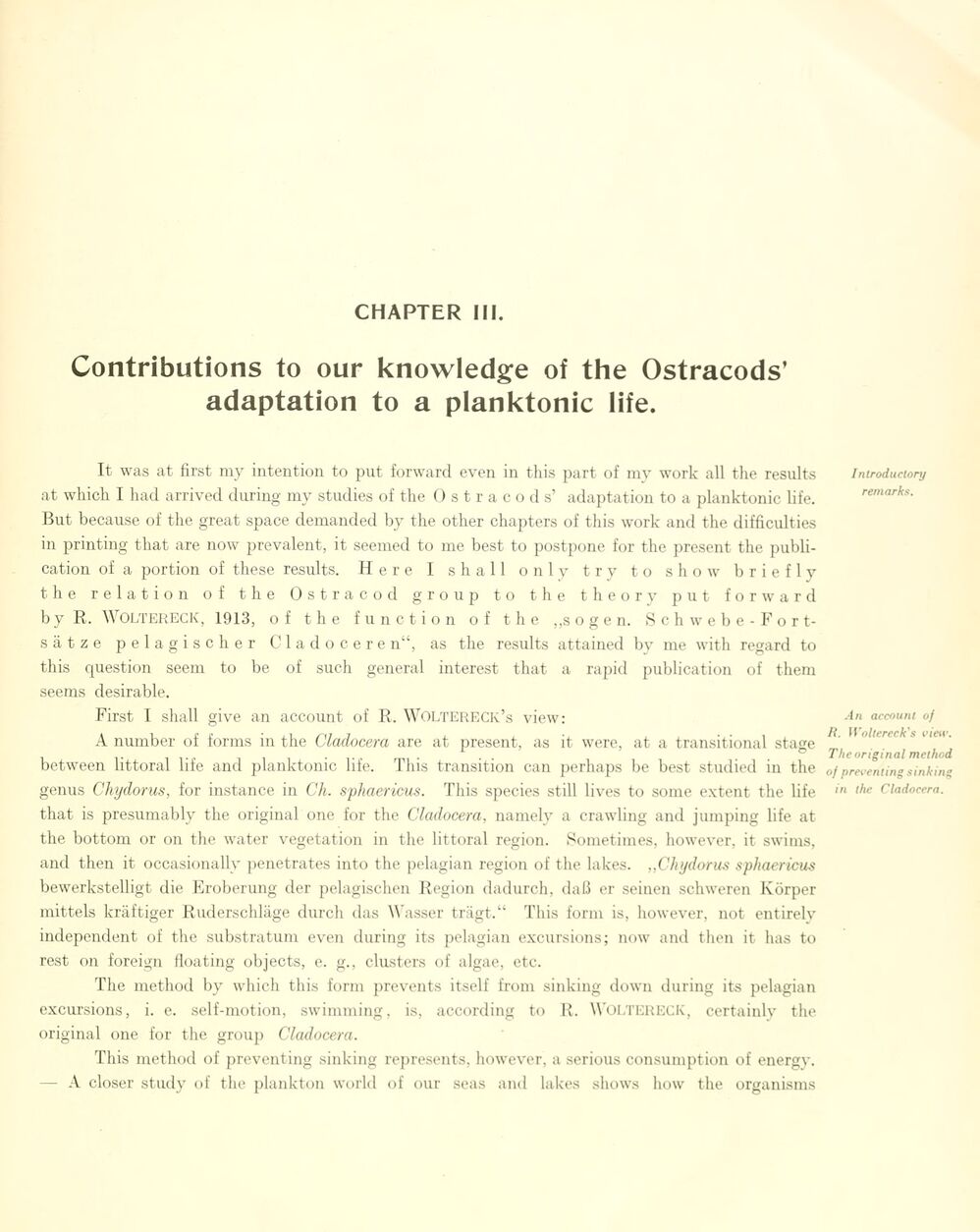
Full resolution (JPEG) - On this page / på denna sida - Sidor ...

<< prev. page << föreg. sida << >> nästa sida >> next page >>
Below is the raw OCR text
from the above scanned image.
Do you see an error? Proofread the page now!
Här nedan syns maskintolkade texten från faksimilbilden ovan.
Ser du något fel? Korrekturläs sidan nu!
This page has never been proofread. / Denna sida har aldrig korrekturlästs.
CHAPTER III.
Contributions to our knowledge of the Ostracods’
adaptation to a planktonic life.
It was at first my intention to put forward even in this part of my work all the results
at wliich I had arrived during my studies of the Ostracods’ adaptation to a planktonic life.
But because of the great space demanded by the other chapters of this work and the difficulties
in printing that are now prévalent, it seemed to me best to postpone for the present the
publication of a portion of these results. Here I shall o n 1 y try to show briefly
the relation of the Ostracod group to the theory put forward
b y R. WOLTERECK, 1913, of the fu netion of the „sogen.
Schwebe-Fortsätze pelagischer Cladocere n“, as the results attained by me with regard to
this question seem to be of such general interest that a rapid publication of them
seems desirable.
First I shall give an account of R. WOLTERECK’s view:
A number of forms in the Cladocera are at present, as it were, at a transitional stage
between littoral life and planktonic life. This transition can perhaps be best studied in the
genus Chydorus, for instance in Ch. sphaericus. This species still lives to some extent the life
that is presumably the original one for the Cladocera, namely a crawling and jumping life at
the bottom or on the water vegetation in the littoral region. Sometimes, however, it swims,
and then it occasionally penetra tes into the pelagian region of the lakes. „Clujdorus sphaericus
bewerkstelligt die Eroberung der pelagischen Region dadurch, daß er seinen schweren Körper
mittels kräftiger Ruderschläge durch das Wasser trägt.“ This form is, however, not entirelv
independent of the substratum even during its pelagian excursions; now and then it has to
rest on foreign floating objects, e. g., clusters of algae, etc.
The metliod by which this form prevents itself from sinking down during its pelagian
excursions, i. e. self-motion, swimming, is, according to R. WOLTERECK, certainly the
original one for the group Cladocera.
This rnethod of preventing sinking represents, however, a serious consumption of energy.
- A doser study of the plankton world of our seas and lakes shows how the organisms
Introductory
remarks.
An aecount of
H. Woltereck’s vie»\
The original method
of preventing sinking
in the Cladocera.
<< prev. page << föreg. sida << >> nästa sida >> next page >>